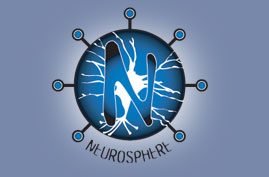Brain Computer Interface
Personal Infrastructure
For a more grounded view of the electric brain, here’s a year-old article from Science.
“This fall, surgeons implanted 100 electrodes into the brain of a 25-year-old quadriplegic man and connected them to a computer that enables him to check his e-mail and choose a television channel with his thoughts alone. And monkeys with similarly implanted electrodes have used brain signals to move cursors or robotic arms in two dimensions (Science, 24 January 2003, p. 496). Now, in a groundbreaking development, two neuroscientists from the Wadsworth Center, part of the New York State Department of Health in Albany, have shown that similar feats may be possible without the dangers of inserting electrodes into the brain. This week, in the online Proceedings of the National Academy of Sciences, Wadsworth’s Jonathan Wolpaw and Dennis McFarland demonstrate a brain-computer interface (BCI) that can translate externally detected brain signals into both horizontal and vertical movement of a computer cursor.”
http://www.sciencemag.org/cgi/content/full/306/5703/1878a
